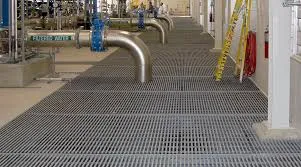
-
 Afrikaans
Afrikaans -
 Albanian
Albanian -
 Amharic
Amharic -
 Arabic
Arabic -
 Armenian
Armenian -
 Azerbaijani
Azerbaijani -
 Basque
Basque -
 Belarusian
Belarusian -
 Bengali
Bengali -
 Bosnian
Bosnian -
 Bulgarian
Bulgarian -
 Catalan
Catalan -
 Cebuano
Cebuano -
 China
China -
 China (Taiwan)
China (Taiwan) -
 Corsican
Corsican -
 Croatian
Croatian -
 Czech
Czech -
 Danish
Danish -
 Dutch
Dutch -
 English
English -
 Esperanto
Esperanto -
 Estonian
Estonian -
 Finnish
Finnish -
 French
French -
 Frisian
Frisian -
 Galician
Galician -
 Georgian
Georgian -
 German
German -
 Greek
Greek -
 Gujarati
Gujarati -
 Haitian Creole
Haitian Creole -
 hausa
hausa -
 hawaiian
hawaiian -
 Hebrew
Hebrew -
 Hindi
Hindi -
 Miao
Miao -
 Hungarian
Hungarian -
 Icelandic
Icelandic -
 igbo
igbo -
 Indonesian
Indonesian -
 irish
irish -
 Italian
Italian -
 Japanese
Japanese -
 Javanese
Javanese -
 Kannada
Kannada -
 kazakh
kazakh -
 Khmer
Khmer -
 Rwandese
Rwandese -
 Korean
Korean -
 Kurdish
Kurdish -
 Kyrgyz
Kyrgyz -
 Lao
Lao -
 Latin
Latin -
 Latvian
Latvian -
 Lithuanian
Lithuanian -
 Luxembourgish
Luxembourgish -
 Macedonian
Macedonian -
 Malgashi
Malgashi -
 Malay
Malay -
 Malayalam
Malayalam -
 Maltese
Maltese -
 Maori
Maori -
 Marathi
Marathi -
 Mongolian
Mongolian -
 Myanmar
Myanmar -
 Nepali
Nepali -
 Norwegian
Norwegian -
 Norwegian
Norwegian -
 Occitan
Occitan -
 Pashto
Pashto -
 Persian
Persian -
 Polish
Polish -
 Portuguese
Portuguese -
 Punjabi
Punjabi -
 Romanian
Romanian -
 Russian
Russian -
 Samoan
Samoan -
 Scottish Gaelic
Scottish Gaelic -
 Serbian
Serbian -
 Sesotho
Sesotho -
 Shona
Shona -
 Sindhi
Sindhi -
 Sinhala
Sinhala -
 Slovak
Slovak -
 Slovenian
Slovenian -
 Somali
Somali -
 Spanish
Spanish -
 Sundanese
Sundanese -
 Swahili
Swahili -
 Swedish
Swedish -
 Tagalog
Tagalog -
 Tajik
Tajik -
 Tamil
Tamil -
 Tatar
Tatar -
 Telugu
Telugu -
 Thai
Thai -
 Turkish
Turkish -
 Turkmen
Turkmen -
 Ukrainian
Ukrainian -
 Urdu
Urdu -
 Uighur
Uighur -
 Uzbek
Uzbek -
 Vietnamese
Vietnamese -
 Welsh
Welsh -
 Bantu
Bantu -
 Yiddish
Yiddish -
 Yoruba
Yoruba -
 Zulu
Zulu
Corrosion Solutions - Protecting Your Assets from Corrosion
Understanding Corrosion and Its Solutions
Corrosion is a natural process that involves the deterioration of materials, often metals, as they react with their environment. This phenomenon can lead to significant economic losses, safety hazards, and environmental concerns. Understanding corrosion and developing effective solutions to mitigate its effects is crucial in various industries, including construction, manufacturing, and transportation.
Understanding Corrosion and Its Solutions
One of the primary strategies for combating corrosion is the application of protective coatings. Paints, varnishes, and galvanization (the process of applying a protective zinc coating) serve as barriers, preventing corrosive agents from reaching the substrate. Regularly inspecting and maintaining these coatings is essential for ensuring long-term effectiveness.
corrosion solution

Another innovative solution is the use of corrosion inhibitors, which are chemicals that slow down the corrosion process. These inhibitors can be applied directly to surfaces or incorporated into the materials themselves. For example, adding corrosion-resistant alloys or applying inhibitors to pipelines can significantly extend their lifespan and reliability.
Cathodic protection is another effective method used primarily in underground or submerged metal structures. This technique involves using a sacrificial anode, which is a more reactive metal that corrodes instead of the protected metal, thus prolonging its life. This method is commonly employed in pipelines, tanks, and marine vessels.
Additionally, regular maintenance and monitoring of metal structures can help identify early signs of corrosion. Implementing technologies such as ultrasonic testing can help detect corrosion before it escalates into a larger issue. Routine inspections can save time and resources while ensuring safety and reliability.
In conclusion, while corrosion poses significant challenges across various sectors, a combination of protective coatings, inhibitors, cathodic protection, and regular maintenance can effectively manage and mitigate its effects. As industries continue to evolve, ongoing research and innovation will play a vital role in developing new materials and techniques to enhance resistance to corrosion, ultimately protecting investments and ensuring safer environments.
Latest news
-
High-Quality Fiberglass Car Bodies Durable GRP Car & Boat Body SolutionsNewsJul.08,2025
-
High-Quality Fiberglass Dual Lamination Product Manufacturer Durable FRP & GRP Dual Lamination SolutionsNewsJul.08,2025
-
Rectangular Tank with Dimensions for GRP Calculation Custom Fiberglass GRP Rectangular TanksNewsJul.07,2025
-
High-Quality Fiberglass Weir Custom FRP Weir & Fiberglass Tanks ManufacturerNewsJul.07,2025
-
CPVC FRP Pipe A Reliable Choice for Industrial Applications High Strength & Corrosion ResistanceNewsJul.07,2025
-
Fiberglass Scrubber for Effective Cleaning and Stain Removal – Superior Performance in Various ApplicationsNewsJul.06,2025









